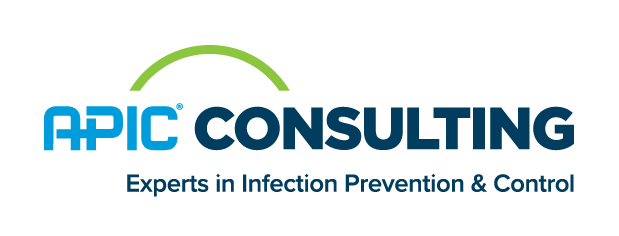New Jersey Enhanced Infection Control Support
Infection Prevention Toolkit for Long-Term Care Facilities
Welcome to the New Jersey Enhanced Infection Control Support Toolkit for Long-Term Care Facilities (LTCF). This toolkit has been meticulously crafted to empower infection prevention professionals and frontline clinical staff with the practical knowledge and resources to implement effective strategies for preventing healthcare-associated infections.
Throughout this toolkit, you will find regulatory requirements, evidence-based practices, guidelines, and customizable tools and resources to address the unique challenges of LTCFs. The sections of the toolkit provide practical steps to help infection preventionists (IPs) optimize and implement stringent infection control measures to mitigate the risk of infections. Each section is tailored to facilitate the integration of preventive strategies into regular workflow routines.
By adopting a proactive stance, LTCFs can create an environment that not only promotes the health and well-being of residents but also adheres to the highest standards of resident safety. We encourage infection preventionists to explore the contents of this toolkit, apply its recommendations, and collaborate with their team to implement a robust infection prevention program that will make a lasting impact on the health outcomes of residents.
The objectives of this toolkit are to support IPs in LTCF settings within the state of New Jersey to plan, develop, and implement evidence-based infection prevention approaches to prevent healthcare-associated infections. The toolkit provides practical actionable approaches and resources on key subjects including hand hygiene, transmission-based precautions, cleaning and disinfection, antimicrobial stewardship and more.
This toolkit is a testament to our collective commitment to creating healthier and safer spaces for those who rely on LTCF services. Together, let us embark on a relentless effort to minimize the occurrence of healthcare-associated infections, and improve the overall well-being of residents by preventing harm during care delivery processes.
Webinar Recordings
Hand Hygiene and Environment of Care Rounds
Learn how to develop a facility-wide Hand Hygiene program.
Discover how to promote change in your facility through Environmental Rounding.
Isolation and Enhanced Barrier Precautions
Understand how differentiating between types of precautions and effectively implementing them can protect your resident population.
Discuss the benefits of enhanced barrier precautions in long-term care.
Cleaning and Disinfection of Environmental Surfaces & Shared Equipment
Discuss the role of environmental surfaces in the transmission of infections.
Optimize techniques for cleaning and disinfection in healthcare settings.
Healthcare-Associated Infection (HAI) Prevention
Recognize the burden of HAIs in healthcare and the risks for long-term care settings.
Implement strategies to combat HAIs through prevention bundles and leadership commitment.
Antimicrobial Stewardship
Create effective antimicrobial stewardship programs to mitigate the consequences of inappropriate antimicrobial use.
Prepare frontline nurses to serve key roles of antimicrobial stewardship champions in our facilities.
COMING SOON! - The Infection Preventionist’s Role in Quality Assurance and Performance Improvement (QAPI) and Infection Control Committee (ICC) Meetings (5/1)
Explore the role of Quality Assessment and Performance Improvement (QAPI) in relation to the Infection Prevention and Control program.
Identify strategies to be an effective Quality Assessment and Assurance Committee member.
Check out the Toolkit Resources below!
Toolkit Resources
The Role of the Infection Preventionist
Infection Preventionist Roles & Responsibilities
Infection Preventionist Checklist for Daily Clinical Meetings
Infection Prevention and Control Committee Agenda and Forms
Infection Preventionist Resources
CMS Infection Prevention and Control Gap Analysis
Annual Infection Control Risk Assessment
auditing
Blood Glucose Monitoring Audit: Single Use Glucometer
Blood Glucose Monitoring Audit: Multi-Use Glucometer
Indwelling Urinary Catheter Audit
Intravascular Catheter Use and Maintenance Audit
Enhanced Barrier Precautions Audit
Exterior to Transmission-Based Precautions/Enhanced Barrier Precautions Room Audit
Environment of Care Rounding
Environmental Rounding Worksheet
Hand Hygiene Program
Hand Hygiene Regulations Presentation
Hand Hygiene Compliance Tracking Tool
Transmission-based Precautions and Enhanced Barrier Precautions
Infection Preventionist Guide for Transmission-Based Precautions
Infection Preventionist Guide for Enhanced Barrier Precautions
Cleaning and Disinfection of the Environment & Shared Equipment
Toolkit: Cleaning and Disinfection of the Environment and Shared Equipment
High Touch Surfaces Cleaning Checklist
General Room Cleaning & Disinfection Audit
Frequency, Method, and Process for Scheduled Cleaning
Cleaning and Disinfecting Products List Template
Cleaning and Disinfecting IP To-Do List
HAI Prevention
HAI Prevention Toolkit: Urinary Catheters, Central Lines, Ventilator Care
Central Line PICC Daily Needs Assessment
Indwelling Urinary Catheter Daily Needs Assessment
Antimicrobial Stewardship
Antimicrobial Stewardship Overview
Antimicrobial Stewardship Annual Review Data
Antimicrobial Stewardship Team Members and Roles
Antimicrobial Stewardship Letter of Support
Antimicrobial Stewardship Program Assessment
Nurse’s Role in Antimicrobial Stewardship Infographic
Blood Glucose Monitoring
Single-Use Glucometer Implementation Guide
NHSN reporting
Guide to the NHSN LTCF Component
surveillance
Surveillance Infection and Device Tracking
